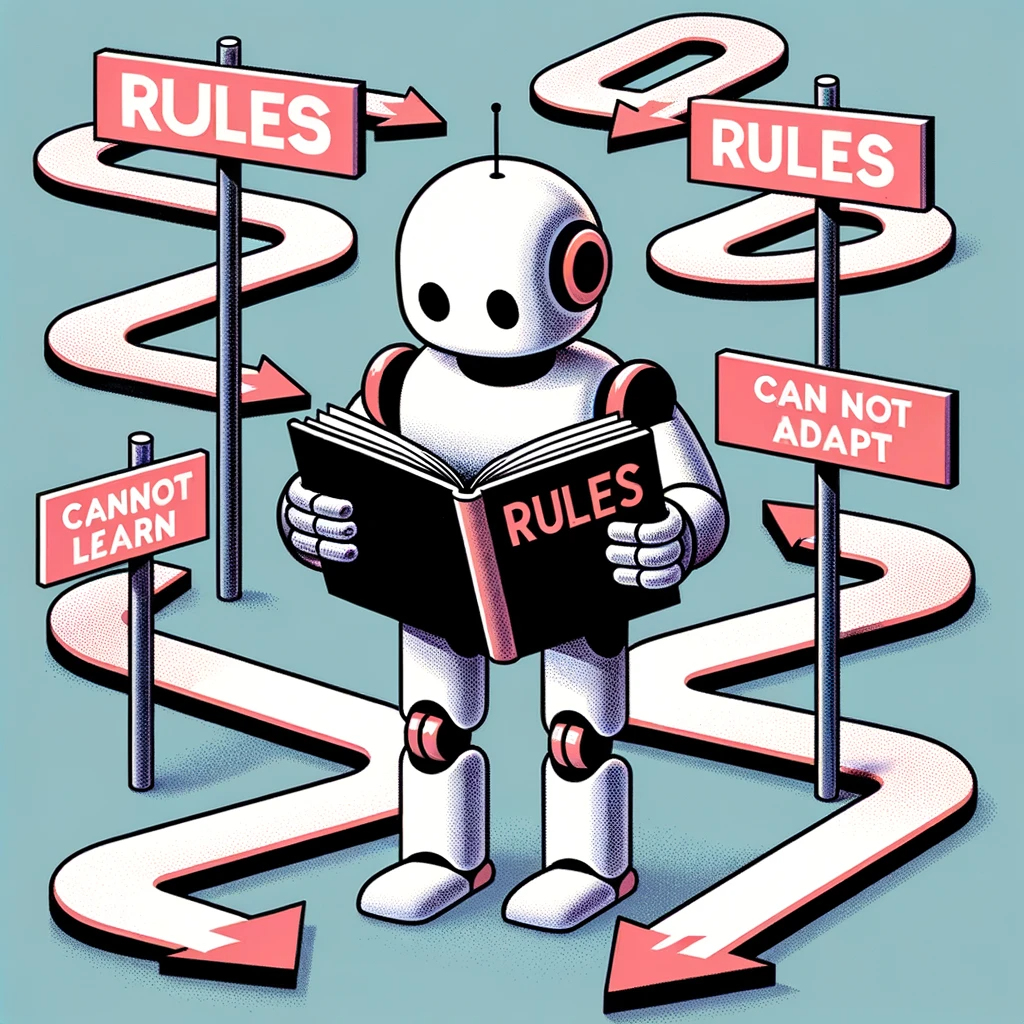Table of Contents
Introduction to AI Rule-Based Systems
Have you ever been intrigued by how specific software applications seem to ‘think’? It’s time to pull back the curtain on the world of AI Rule-Based Systems.
The Expert Systems Phenomenon:
Expert Systems are the unsung heroes of the early AI world. Acting as digital consultants, they use a predefined set of rules to provide solutions, much like a seasoned expert in a field would.
Decision Trees – More Than Just Branches:
It’s AI’s way of making methodical decisions. By following a series of conditions, much like a flowchart, it leads to an outcome or decision—kind of like a choose-your-own-adventure book.
The Powerhouse Knowledge Base:
Consider this the extensive library of AI. Packed with data, facts, and rules, the Knowledge Base is where AI turns to when seeking answers.
The Dynamic Inference Engine:
Acting as the engine room, this component processes the rules from the Knowledge Base to deduce new information, making it the analytical powerhouse.

IF-THEN Magic: The Backbone of Rules:
This simple logical structure forms the foundation of rule-based AI. It’s like setting an alarm: If it’s 7 am, then wake me up.
Prolog – The Logic Programming Maestro:
This high-level programming language specializes in logic and symbolic AI, serving as the foundation for many rule-based systems.
Static AI: Standing Steadfast:
Unlike dynamic AI, which learns and evolves, Rule-Based AI remains consistent in its decisions, making it reliable and predictable.
Symbolic AI: Connecting the Dots:
Before Machine Learning took the limelight, Symbolic AI, which focuses on symbols and rules, was the primary approach in AI research.
Semantic Networks: Weaving Information:
Imagine a web of interconnected information. Semantic Networks are AI’s way of linking related facts, ensuring a more comprehensive understanding.
Forward Chaining: The Sequential Sleuth:
This method operates step by step, piecing together information until a conclusion is reached, much like assembling a jigsaw puzzle.
Backward Chaining: The Reverse Engineer:
Starting with a hypothesis, this approach works in reverse, verifying if the initial assumption holds true against known facts.
Heuristic Processing: The Art of Guesstimation:
While rule-based AI is about strict rules, sometimes it takes shortcuts. Heuristic processing is about making those educated guesses.
Examples
Five simple examples of AI rule-based systems:
Spam Filters: Spam filters use a set of rules to identify and filter out unwanted emails. These rules may be based on factors such as the sender’s email address, the subject line, or the content of the email.
Content Moderation Systems: Content moderation systems use a set of rules to identify and remove inappropriate content from websites and social media platforms. These rules may be based on factors such as the content’s language, images, or videos.
Fraud Detection Systems: Fraud detection systems use a set of rules to identify and flag potentially fraudulent transactions. These rules may be based on factors such as the transaction amount, the location of the transaction, or the type of transaction.
Recommendation Engines: Recommendation engines use a set of rules to recommend products, services, or content to users. These rules may be based on factors such as the user’s past purchases, their browsing history, or their demographic information.
Product Configurators: Product configurators use a set of rules to help users configure complex products, such as cars or computers. These rules ensure that the user’s choices are compatible and that the product can be manufactured.
Embarking on this journey through AI Rule-Based Systems offers a glimpse into the foundational pillars of artificial intelligence. Whether you’re a novice curious about tech or a seasoned professional, there’s a wealth of knowledge waiting to be uncovered.
Read More:
“Understanding AI: Machines That Think Like Us!” 🎩🤖
Refer:
https://en.wikipedia.org/wiki/Rule-based_system


